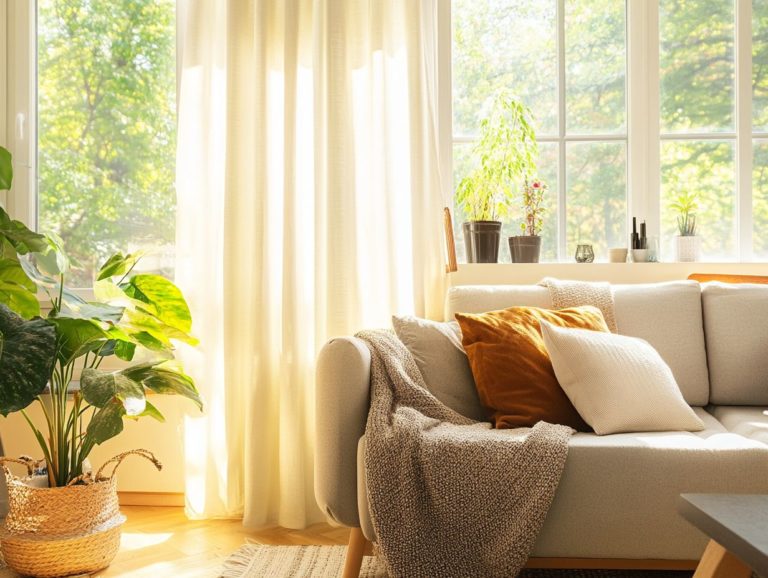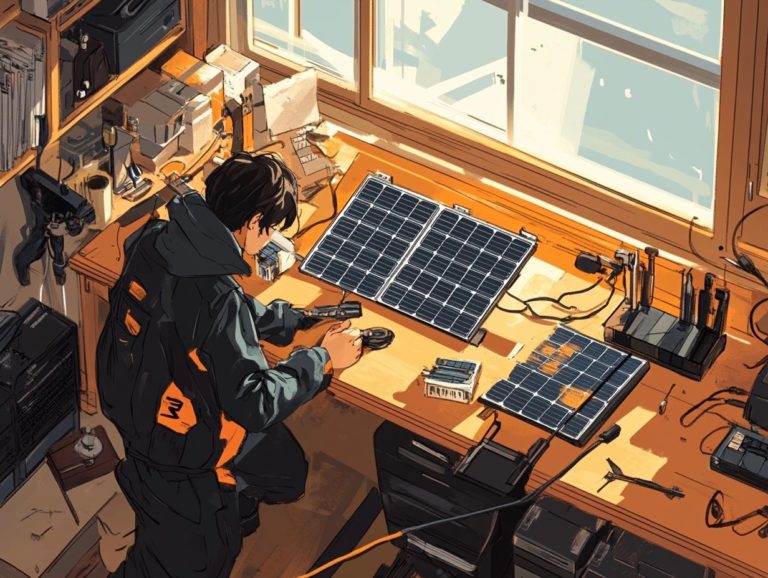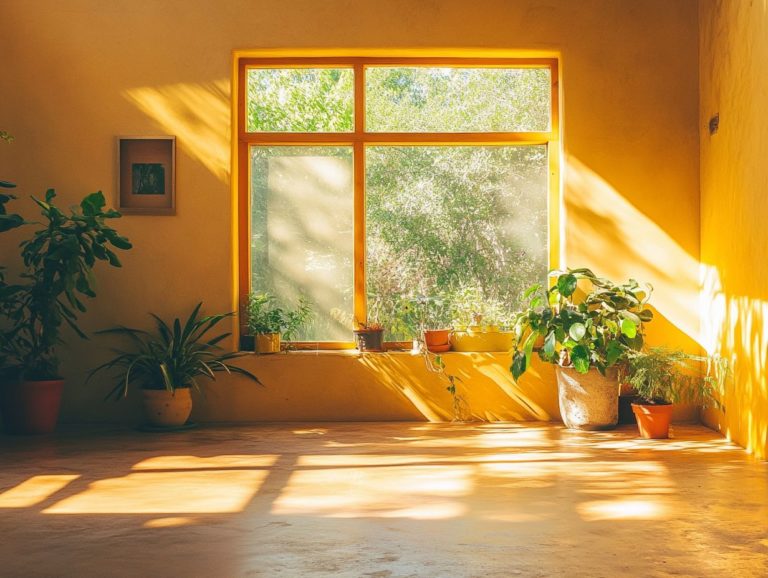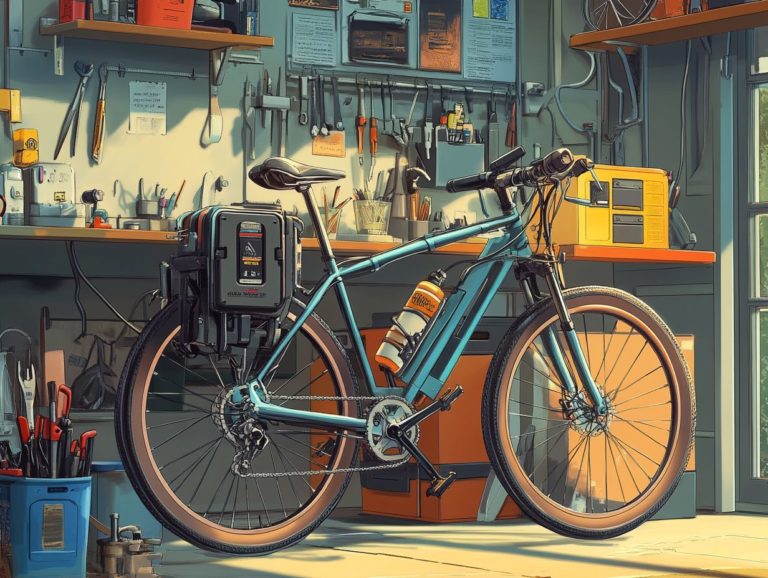DIY Projects for a Low-Carbon Footprint Home
In a world that is becoming increasingly attuned to environmental concerns, creating a low-carbon footprint home is not just a trend it s a necessity, especially in the United States.
By embracing sustainable practices, you can reap both environmental and financial rewards. Get ready to explore exciting DIY projects, energy-efficient upgrades, and water conservation techniques that will help you reduce your carbon footprint.
From opting for eco-friendly materials to growing your own food, you’ll discover how simple changes can pave the way for a more sustainable lifestyle.
Start transforming your home today!
Contents
- Key Takeaways:
- Benefits of Reducing Your Carbon Footprint
- DIY Projects for a Low-Carbon Footprint Home
- Energy-Efficient Upgrades
- Water Conservation Techniques
- Using Sustainable Materials
- Creating a Sustainable Garden
- Frequently Asked Questions
- 1. Simple DIY Projects to Lower Your Carbon Footprint!
- 2. How Can I Reduce My Carbon Footprint Through DIY Home Improvement?
- 3. DIY Projects That Can Help Save Money on Utility Bills
- 4. Can I Make My Own Cleaning Products to Reduce My Home’s Carbon Footprint?
- 5. How Do I Create a Low-Waste DIY Home?
- 6. DIY Projects That Improve Indoor Air Quality in a Low-Carbon Footprint Home
Key Takeaways:
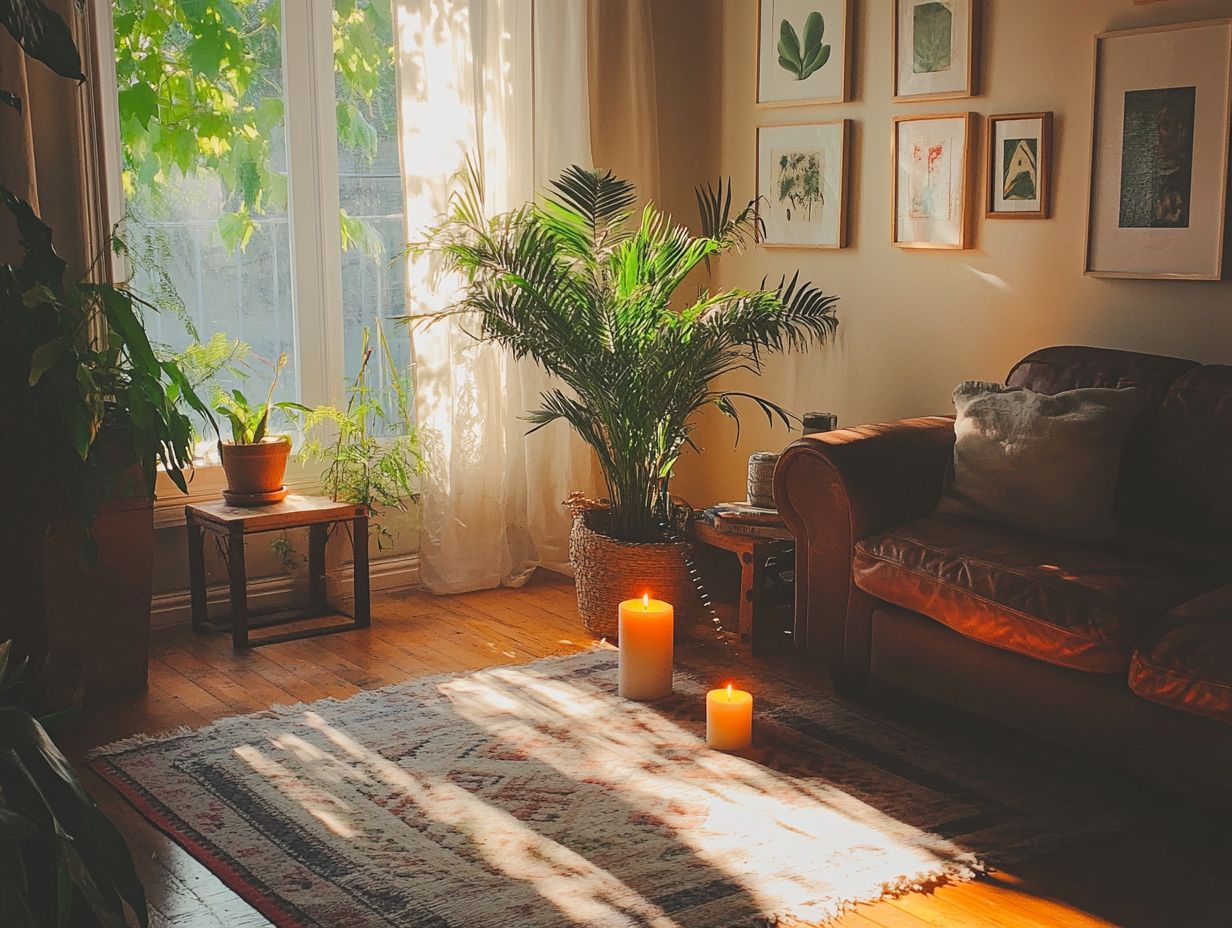
- Reducing your carbon footprint at home benefits both the environment and your finances.
- Taking on simple and cost-effective DIY projects can significantly lower your home’s carbon footprint.
- Upgrading to energy-efficient systems and using sustainable materials can make your home more environmentally friendly.
What is a Low-Carbon Footprint Home?
A low-carbon footprint home is crafted to minimize pollution from homes through energy-efficient practices, sustainable materials, and eco-friendly technologies. It s not just about reducing your carbon footprint; it s also about emphasizing energy savings and harnessing renewable resources.
Such residences often feature advanced insulation techniques, ensuring comfortable indoor temperatures while decreasing reliance on heating and cooling systems. By choosing appliances certified by ENERGY STAR a program that helps people save money and protect the environment through energy-efficient products you not only lower energy usage but also align yourself with a commitment to sustainability.
Incorporating solar panels or wind turbines can significantly offset energy costs, making your home both an economic and ecological choice. The Energy Department champions these practices, underscoring their importance in long-term energy efficiency and emissions reduction. For more insights, you can explore how to reduce your carbon footprint at home. Embracing a low-carbon footprint lifestyle doesn’t just contribute to a healthier planet; it also enhances your quality of life.
Benefits of Reducing Your Carbon Footprint
Reducing your carbon footprint brings a wealth of benefits, both for the environment and your wallet. By embracing energy efficiency and sustainable living practices, you can make a direct impact on your energy bills and overall well-being.
Implementing eco-friendly solutions conserves valuable resources while fostering a healthier planet. When you choose sustainable materials and practices, you effectively decrease your energy consumption and reap significant savings. It’s a win-win for both you and the Earth.
Environmental and Financial Advantages
The environmental and financial benefits of embracing eco-friendly practices in a low-carbon footprint home are numerous, offering everything from reduced energy bills to substantial decreases in harmful emissions. By investing in energy-efficient technologies and sustainable materials, you can create not only a healthier environment but also enjoy significant financial savings over time.
This dual advantage elevates your quality of life and strengthens your commitment to sustainability. When you opt for energy-saving solutions like LED bulbs or compact fluorescent lights (CFLs), you’ll notice a remarkable drop in your electricity consumption. These technologies outlast traditional options, meaning fewer replacements and less waste, all while slashing your lighting costs.
With the savings you accrue, you can redirect funds toward other green initiatives, further nurturing a more sustainable living space. These thoughtful upgrades ultimately lead to a notable reduction in carbon footprints, promoting greater environmental health and enhancing the overall economic well-being of your household.
Join the movement for a greener planet start your eco-friendly home makeover today!
DIY Projects for a Low-Carbon Footprint Home
Engaging in DIY projects to boost the energy efficiency of your home can significantly impact your carbon footprint while providing a rewarding creative outlet. Consider installing energy-efficient products from brands like IKEA or LG.
These endeavors can range from straightforward tasks like weather stripping to more intricate upgrades such as enhancing insulation and installing solar power systems.
By embracing these projects, you reduce your carbon footprint and foster a sustainable lifestyle that highlights the importance of essential DIY items for sustainable living and eco-friendly practices.
Simple and Cost-Effective Solutions

Simple and cost-effective solutions for enhancing your home s energy efficiency often come in the form of DIY projects. For example, weather stripping and insulation upgrades not only contribute to a lower carbon footprint but also elevate your home s comfort level while slashing energy bills.
Utilizing low-cost insulation materials such as foam boards or cellulose helps retain heat during winter and keeps interiors cool in summer. Additionally, weather stripping seals gaps around doors and windows to prevent drafts and maintain a stable indoor temperature.
By tackling these projects, you create a more enjoyable living environment and unlock significant long-term savings. Investing in energy efficiency is a win-win for the planet and your wallet.
Energy-Efficient Upgrades
Investing in energy-efficient upgrades is crucial for crafting a low-carbon footprint home. These improvements align with environmental standards while reducing energy consumption and expenses.
Enhancements may include better insulation methods, programmable thermostat installations, and the adoption of energy-efficient appliances. Prioritizing these upgrades allows you to enjoy a more sustainable living space while significantly lowering your energy bills.
Improving Insulation and Air Sealing
Improving insulation and air sealing in your home is vital for maximizing energy efficiency and minimizing waste. Properly insulating walls, attics, and basements and sealing air leaks can significantly reduce energy consumption and related costs.
To begin, consider using materials like fiberglass batts, spray foam, or cellulose to boost insulation. Techniques such as adding radiant barriers or opting for blown-in insulation can enhance thermal resistance, helping maintain consistent temperatures throughout your home.
For air sealing, applying caulk or weather stripping around windows and doors keeps pesky drafts at bay. Together, these strategies lead to substantial savings on heating and cooling bills while improving your home’s long-term durability and indoor air quality.
Water Conservation Techniques
Implementing water conservation techniques is essential for creating a low-carbon footprint home. By adopting these methods, you embrace sustainable living, significantly reducing water usage while promoting eco-friendly practices.
Consider installing low-flow fixtures and using rain barrels for irrigation. These strategies dramatically cut down on water waste while nurturing a green home environment.
Not only do these practices foster water conservation, but they also align beautifully with energy-saving initiatives, creating a comprehensive approach to sustainability.
Start your DIY projects today to save money and protect the planet! Share your own DIY projects or tips for a low-carbon home with us.
Installing Low-Flow Fixtures and Rain Barrels
Installing low-flow fixtures and rain barrels enhances your water conservation efforts. You can reduce your water usage significantly without losing performance.
By swapping out standard fixtures for low-flow alternatives, you can make a big difference. Rain barrels are a fantastic, eco-friendly solution for collecting and using rainwater for irrigation.
The installation process for these fixtures is refreshingly straightforward. It requires minimal tools and time, making it an accessible project for everyone.
Low-flow faucets and showerheads can typically be replaced in under an hour. Setting up rain barrels alongside downspouts takes just a few simple steps.
These installations lead to impressive water savings. They can also translate into lower utility bills.
Over time, your initial investment in low-flow fixtures and rain barrels will pay off, highlighting their significance in promoting water conservation and a more sustainable lifestyle.
Using Sustainable Materials
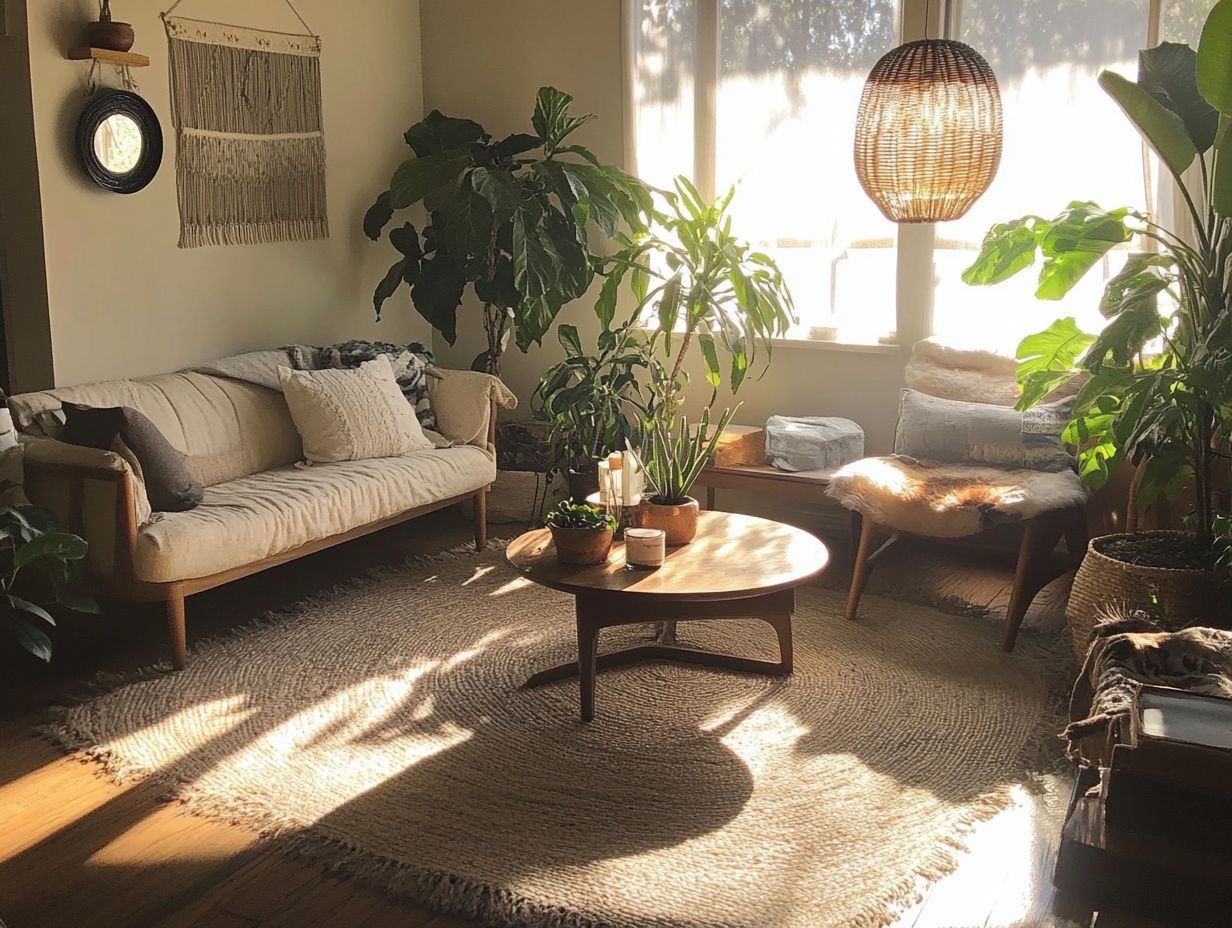
Incorporating sustainable materials into your home design and renovation supports a low-carbon footprint. It underscores the importance of eco-friendly practices in today s world.
Choosing recycled and reclaimed materials is not just a choice; it s a powerful step towards saving our planet!
Adding vintage furniture and reclaimed items elevates your aesthetic appeal. It also encourages the recycling of waste, creating a greener home.
Eco-Friendly Building Materials and Furnishings
Choosing eco-friendly building materials and furnishings is essential for crafting a low-carbon footprint home. It embodies sustainability without sacrificing style.
By selecting low VOC (volatile organic compounds) and responsibly sourced materials, you ensure a healthier indoor environment. Opting for vintage furniture adds character while promoting recycling.
These thoughtful choices enhance your design while significantly contributing to energy efficiency and environmental conservation.
Materials like bamboo, reclaimed wood, and recycled metal minimize resource depletion. They offer unique aesthetic qualities that can elevate the look of any space.
Explore local suppliers or online marketplaces specializing in sustainable goods to uncover these treasures.
Incorporating cork flooring or natural stone countertops adds warmth and texture. Large windows maximize natural light and reduce reliance on artificial lighting.
By intentionally selecting and integrating these eco-friendly options, you can create a home that reflects your personal style. It also demonstrates a commitment to a greener future.
Creating a Sustainable Garden
Creating a sustainable garden is a meaningful way to elevate your low-carbon footprint home. It promotes eco-friendly practices and fosters self-sufficiency.
By growing your own food, you can significantly minimize your carbon impact while enjoying fresh produce right from your backyard.
Integrating composting into your gardening routine reduces waste. It also enriches the soil, making it an essential component of sustainable living.
Growing Your Own Food and Composting
Growing your own food and embracing composting are essential elements of a sustainable garden. These practices not only enhance eco-friendly living but also deepen your connection to nature. When you cultivate fruits, vegetables, and herbs at home, you can savor fresh produce while dramatically cutting down the carbon footprint linked to transportation and packaging.
Composting your kitchen waste enriches your garden soil, creating a garden that takes care of itself. This supports a greener lifestyle.
These practices also let you explore a diverse selection of plants, from leafy greens like spinach and kale to root vegetables such as carrots and potatoes, and even aromatic herbs like basil and thyme.
Starting your composting journey can be as simple as choosing between traditional bins or trying worm composting. Each option offers unique benefits, such as reducing landfill waste and producing soil that is full of important nutrients plants need to grow well, which is essential for a sustainable garden.
Embrace these techniques now and enjoy the benefits! You not only enhance your personal health with food grown without harmful chemicals but also play a crucial role in promoting variety of plants and animals and reducing harmful emissions, truly embodying the spirit of sustainable living.
For more insights, check out resources from the Energy Department and ENERGY STAR for guidance on energy-efficient practices.
Frequently Asked Questions
1. Simple DIY Projects to Lower Your Carbon Footprint!
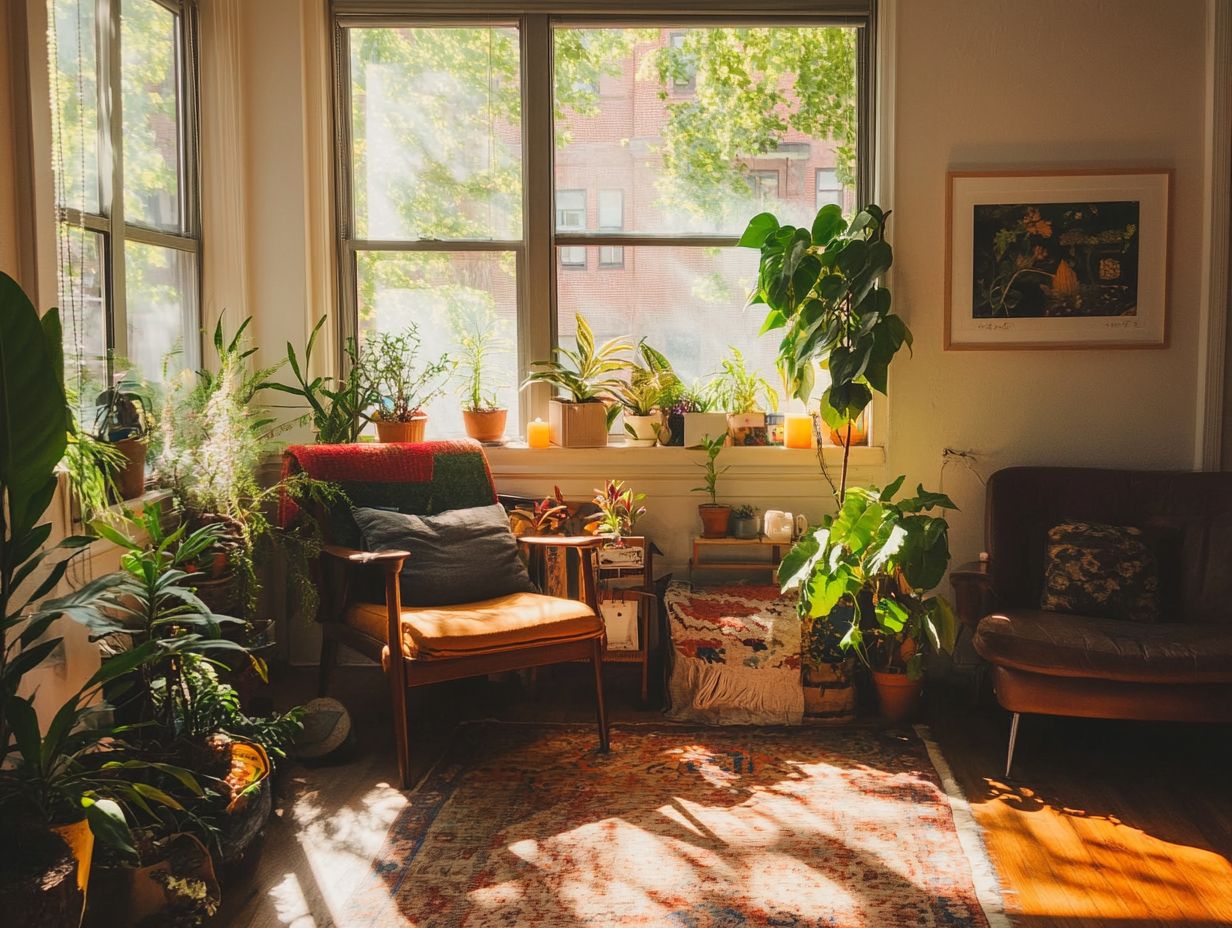
Some easy DIY projects for a low-carbon footprint home include: installing energy-efficient light bulbs, such as compact fluorescent (CFL) and LED bulbs, weather stripping doors and windows, making your own compost bin, and creating a rainwater harvesting system that enhances your energy savings.
2. How Can I Reduce My Carbon Footprint Through DIY Home Improvement?
You can reduce your carbon footprint through DIY home improvement by using sustainable and local materials. Choose energy-efficient appliances such as Sub-Zero, Miele, and LG, and integrate renewable energy sources like solar panels or wind turbines to lower your overall energy bills.
3. DIY Projects That Can Help Save Money on Utility Bills
Yes, there are several DIY projects that can help save money on utility bills. These include insulating your attic, installing a programmable thermostat, and sealing air leaks in your home to improve home insulation.
4. Can I Make My Own Cleaning Products to Reduce My Home’s Carbon Footprint?
Absolutely! You can make your own cleaning products using natural ingredients like vinegar, baking soda, and essential oils. These products are not only better for the environment, but they are also more affordable than store-bought options, promoting a low-waste DIY home.
5. How Do I Create a Low-Waste DIY Home?
To create a low-waste DIY home, start by reducing your consumption of single-use items. Repurpose old materials for new projects and use reusable alternatives like cloth towels instead of paper towels. Integrate practices that encourage energy efficiency.
6. DIY Projects That Improve Indoor Air Quality in a Low-Carbon Footprint Home
Yes, there are several DIY projects that can improve indoor air quality in a low-carbon footprint home. These include using natural air purifiers like plants, making your own non-toxic cleaning products, and using low VOC paints and sealants during home renovations to further enhance your home’s sustainability.

